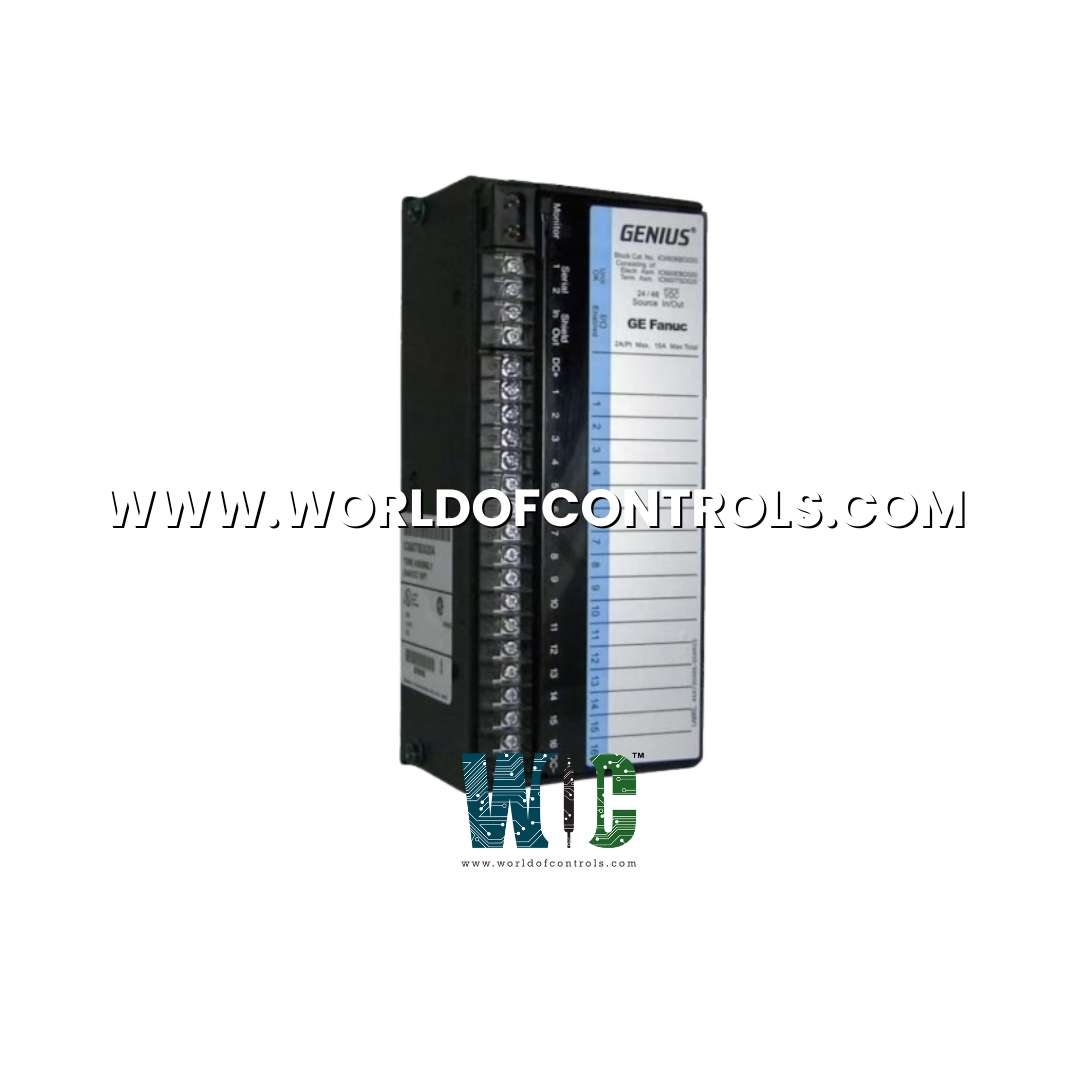
World Of Controls understands the criticality of your requirement and works towards reducing the lead time as much as possible.
IC660RBD024 - Genius GMR Source Output Module is available in stock which ships the same day.
IC660RBD024 - Genius GMR Source Output Module comes in UNUSED as well as REBUILT condition.
To avail our best deals for IC660RBD024 - Genius GMR Source Output Module, contact us and we will get back to you within 24 hours.
SPECIFICATIONS:
Part No: IC660RBD024
Manufacturer: General Electric Fanuc
Product Type: Genius GMR Source Output Module
Series: Genius I-O
Operating Voltage: 18 to 56 Volts DC
Operating Current: 0.5 to 1.0 Amps
No. of Circuits: 32 I/O circuits
Operating temperature: 40 to 100 ºC
Input processing time: 1.4 ms
Input Signal Voltage: 5 / 12 24 / VDC TTL
Maximum Inrush Current: 4 Amperes
Supply Voltage Range: 18-56 VDC
Block Power: 24/48 Volts DC
Output Points: 32 Output Points
Size: 8.83 x 3.58 x 4.7 inches
Product Lifecycle: Discontinued By Manufacturer
Availability: In Stock
Country of Origin: USA
FUNCTIONAL DESCRIPTION:
IC660RBD024 is a Genius GMR Source Output Module manufactured and designed by General Electric as part of the Mark II Series used in GE Speedtronic Control Systems. The output subsystem of the GMR (Global Monitoring and Reliability) system is designed to control and monitor discrete output loads. It supports multiple configurations to meet safety, redundancy, and diagnostic requirements. These configurations may include H-Block, T-Block, I-Block, 1-out-of-1 Diagnostics, and Genius Redundancy Output Groups. The IC660BRD024 Source Output Block is compatible with both H-Output and T-Output group configurations, offering flexible deployment options in safety-critical and high-availability environments.
H-Output Group Configuration: In this setup, two Source Output Blocks are connected in parallel to one side of the load. Simultaneously, two sinking output blocks are connected in parallel to the other side. This dual-source and dual-sink arrangement enhances fault tolerance and allows for active health monitoring of the outputs. If any one block fails, the remaining blocks continue to drive the load, thus ensuring continued operation and increased reliability.
T-Output Group Configuration: In this simpler yet effective configuration, two IC660BRD024 Source Output Blocks are connected in parallel to one side of the load, while the other side of the load is connected directly to ground. This setup is typically used in applications where sourcing output redundancy is required, but sinking redundancy is not essential.
The T-Block output group is designed for high-reliability industrial applications and supports an aggregate current rating of 16.0 Amps. It features a maximum leakage current of just 20 microamps, making it suitable for sensitive control environments where precision and low standby currents are critical. The Source Output Block plays a vital role in both T-Output and H-Output configurations, thanks to its robust internal design. Each output point is equipped with integrated blocking diodes and feedback resistors, which serve two essential purposes:
WOC has the largest stock of OEM Replacement Parts for GE Speedtronic Gas Turbine Control Systems. We can also repair your faulty boards and supply unused and rebuilt boards backed up with a warranty. Our team of experts is available around the clock to support your OEM needs. Our team of experts at WOC is happy to assist you with any of your automation requirements. For pricing and availability on parts and repairs, kindly contact our team by phone or email.
What types of output configurations are supported?
The module supports both T-Block and H-Block output group configurations. In a T-Block setup, two source output blocks are connected in parallel to one side of the load, with the opposite side connected to ground. This configuration offers basic redundancy. In an H-Block configuration, two source output blocks are again connected to one side of the load, but the other side is connected to two sinking output blocks.
What is the total current rating in the T-Block configuration?
When used in a T-Block configuration, the module can handle a combined output current of up to 16.0 Amps. This makes it suitable for applications involving multiple loads or high-demand devices. The aggregate rating ensures that even under redundant operation, the system can maintain enough capacity to power critical field components without interruption.
What is the maximum leakage current per output point?
The module is designed to operate with a very low leakage current, with a maximum of just 20 microamps per output point. This is particularly important in safety systems where outputs must remain completely off unless actively energized. The low leakage helps avoid unintended activation of sensitive field devices, maintaining the system's safe state during idle conditions.